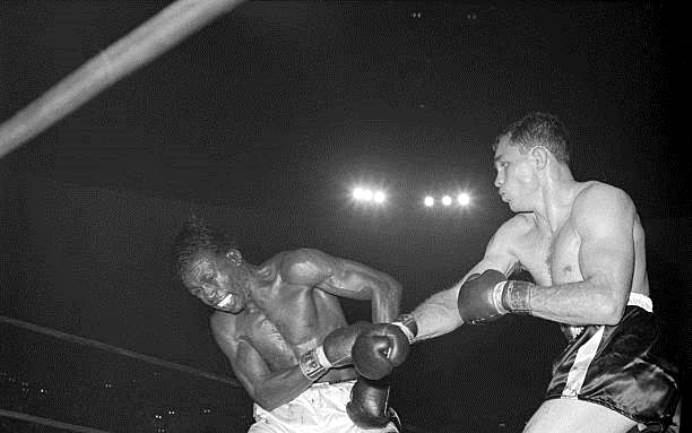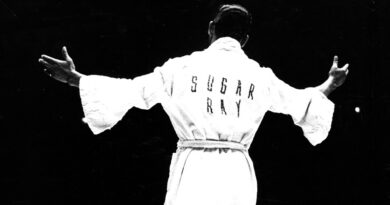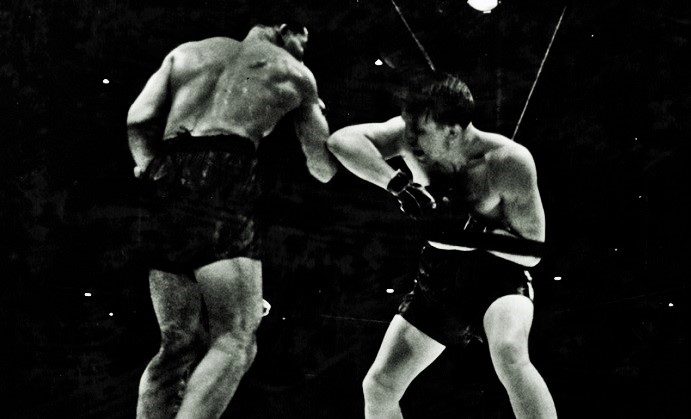April 21, 1962: Brown vs Ortiz
They called him “Old Bones” because they needed something to liven up his image and distinguish him from all the other Joe Browns in America, but also because his career, like those of too many talented black boxers, was one defined for many years by frustration and opportunities denied. By the time Joe Brown of Baton Rouge, Louisiana got his first and long overdue shot at a world title he had been battling in the pro ranks for almost fifteen years and was, in athletic terms, “old.” Naturally he made sure to capitalize on his big chance, taking a close decision over Wallace “Bud” Smith, despite breaking his right hand in the second round.
“It was a rocky road to the top,” said “Old Bones” after his title-winning effort. “But it’s nice when you finally get there. And nothing can beat it when they call you ‘champ.'”

None other than Nat Fleischer of The Ring hailed Brown’s victory as a singular achievement: “I have never seen anything like it. I have witnessed boxers on the verge of a knockout make a comeback and win the championship, but never a challenger fighting his way to the crown for thirteen rounds with just one hand.” However, some questioned the win since the close decision went Brown’s way in his home state of Louisiana, but the new champion silenced the critics when he gave Smith a rematch six months later and this time stopped “Bud” in round eleven.
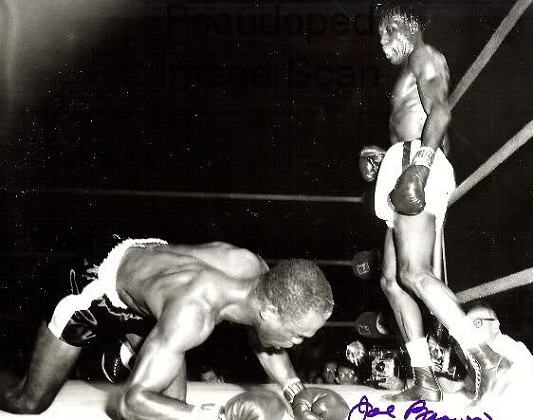
“Old Bones” then did his level best to take full advantage of his time as king of the lightweights, mixing a healthy number of non-title fights into his hectic schedule as he went on to set a record for most consecutive defenses of the lightweight championship, notching eleven in total and in the process defeating such capable pugilists as Johnny Busso and Ralph Dupas. Trained by Bill Gore, Brown’s 68-inch reach, sharp jab and hard right hand allowed him to reign supreme at 135 for the next four years. But then along came young Carlos Ortiz.
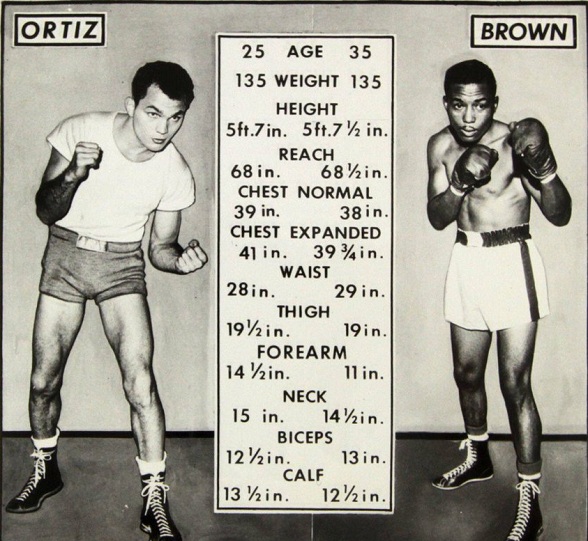
Ortiz had in fact already held a world title. He had defeated Kenny Lane to win the vacant junior welterweight belt but after losing the title by decision to Duilio Loi, Ortiz decided to go down in weight and campaign at 135. To earn his right for a crack at “Old Bones” he first had to get past experienced top contender Paolo Rosi who had given Brown a tough challenge in 1959 before the match was stopped on cuts. Ortiz survived a knockdown to take a close decision from Rosi, though the judges’ verdict was not popular with the crowd in Madison Square Garden. No matter; the win, which most at ringside saw as narrowly deserved, gave Ortiz what he wanted: a shot at “Old Bones” and his world lightweight championship.
“I’m younger than Brown and stronger,” said Ortiz as his chance for a second title neared. “I’ve been chasing him and it’s overdue for me to catch him.”
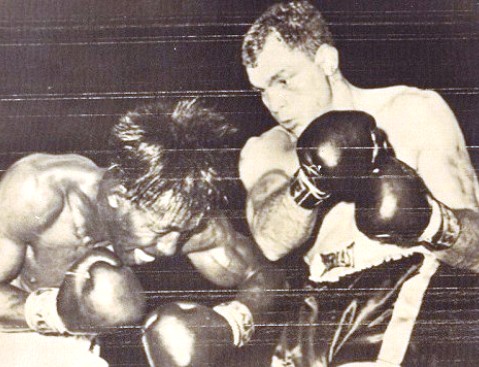
The Brown vs Ortiz showdown, held in the Las Vegas Convention Center, justified the confident Puerto Rican’s pre-fight boasts. He was indeed younger and stronger and it showed from the opening bell. Brown looked every minute of his 35 years as he had little answer for the challenger’s fast-paced boxing and sharp left jab. Ortiz continually beat Brown to the punch with that left lead and when the fight moved to the inside he was stronger and more active. “Old Bones” found himself on the retreat in virtually every round, though on occasion he landed some solid blows, cutting the challenger’s right eye in the sixth. But the judges could agree on giving him only a single round, the fourth. The unofficial Associated Press card also saw Brown winning a single round.
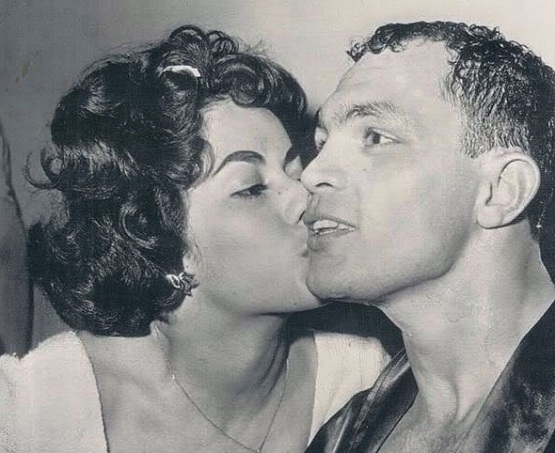
A jubilant Ortiz let loose a howl of joy at the final bell as did his friends and fans in Puerto Rico. He would go on to establish himself as one of the finest champions in lightweight history with title wins over such elite pugilists as Flash Elorde, Ismael Laguna, Kenny Lane and Sugar Ramos. Many regard him as the greatest boxer ever produced by Puerto Rico, the homeland of such formidable champions as Esteban De Jesus, Wilfredo Gomez, Felix Trinidad and Wilfred Benitez.
Meanwhile, “Old Bones” was indeed old and rather ringworn now, but he stubbornly kept fighting despite never regaining the form which enabled him to become one of the division’s most active champions and 1961’s Fighter of the Year. But he remained prolific, answering the bell some 55 times over the next eight years, though losing as much as he won, before he finally retired at the age of 42. It took a legendary talent in Roberto Duran to break his record for consecutive lightweight title defenses, and just as Brown’s title shot was long overdue, so was his induction into Canastota, but it finally happened in 1996, little more than a year before his death at age 71. — Robert Portis

